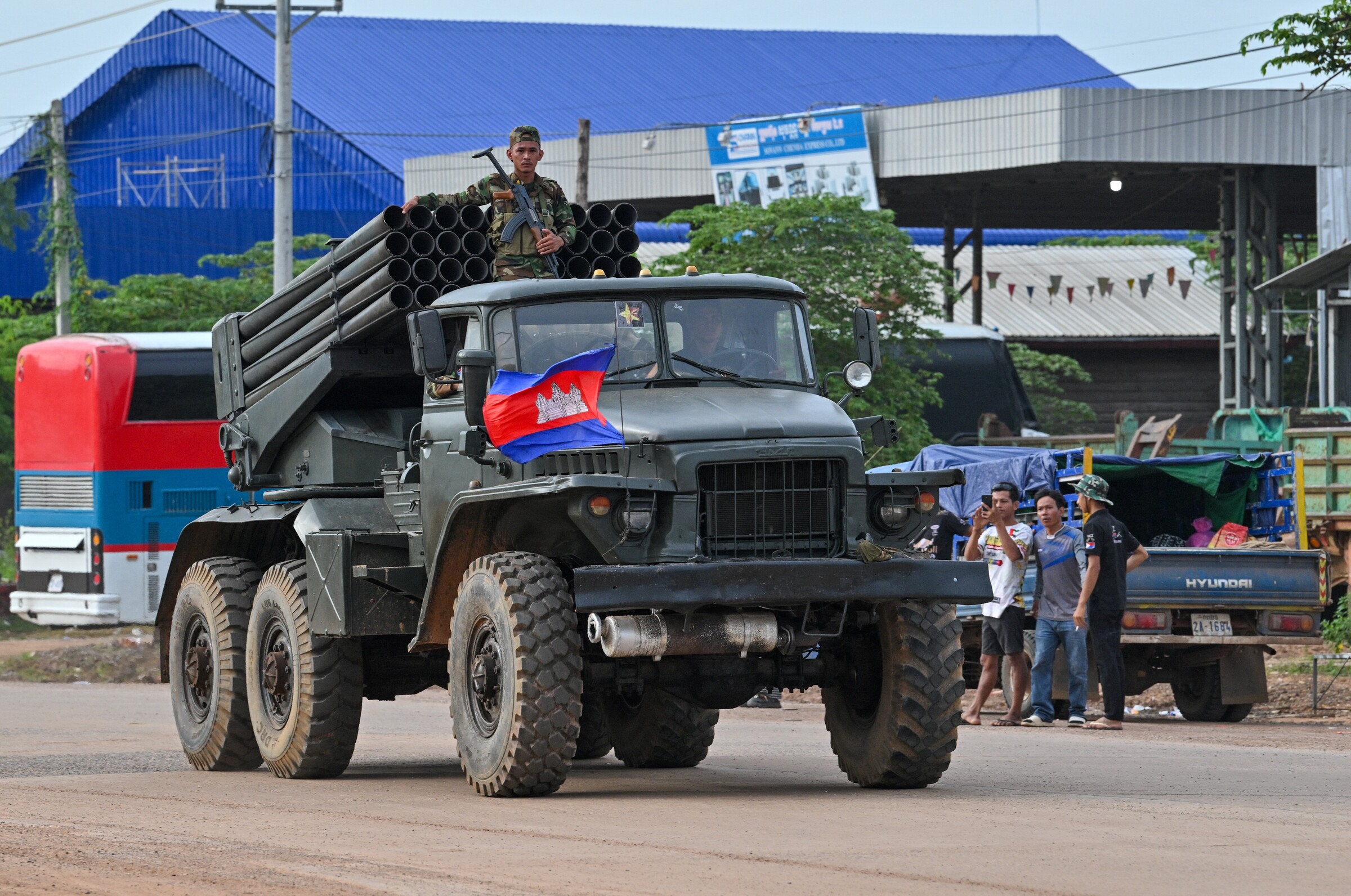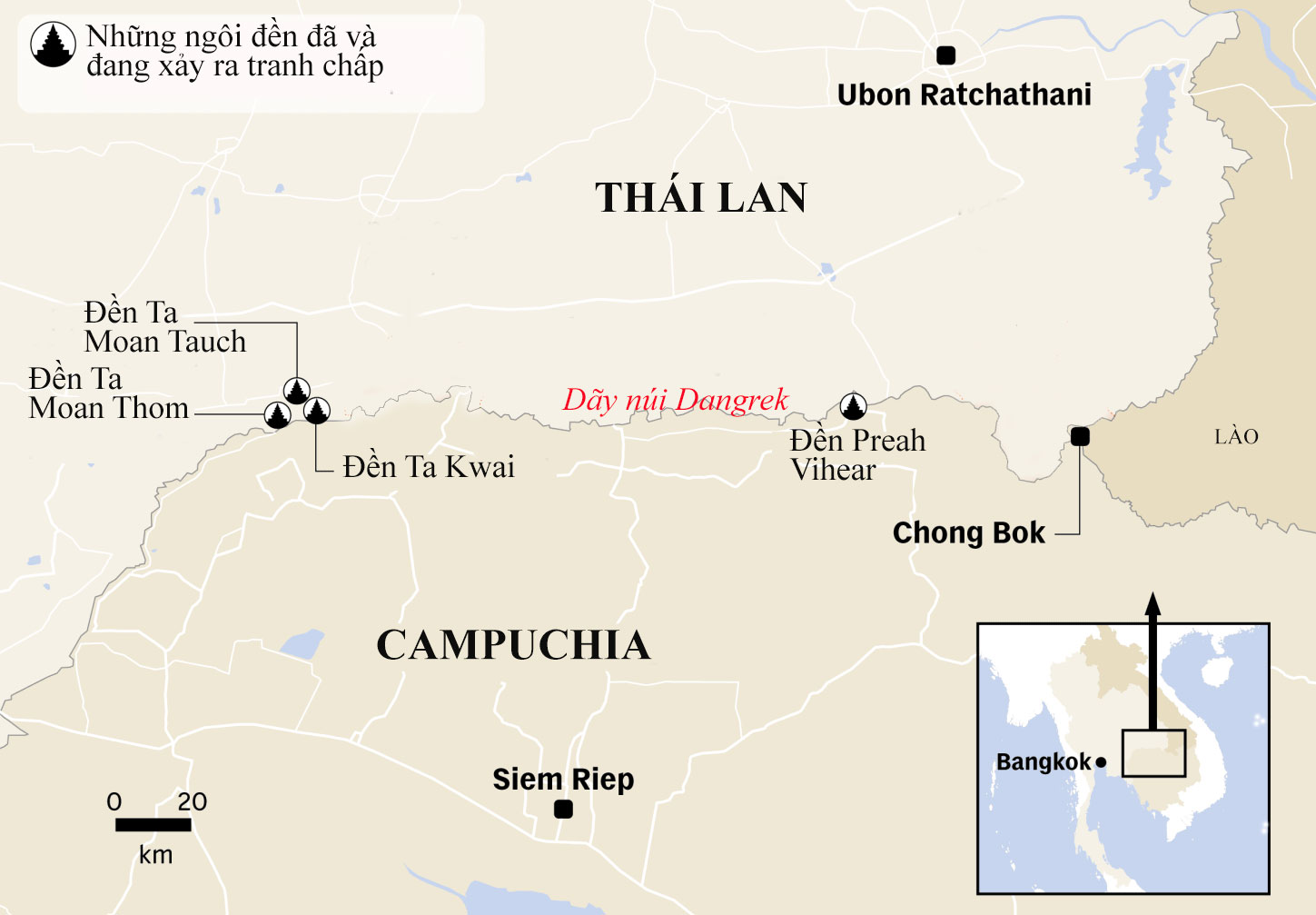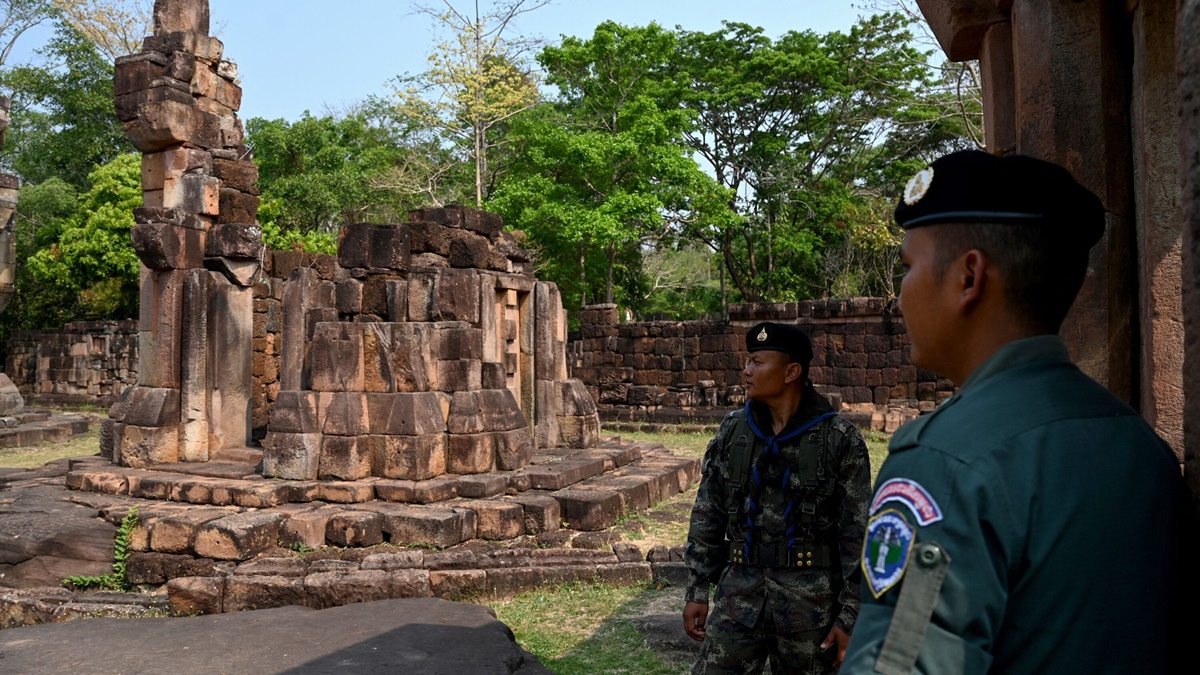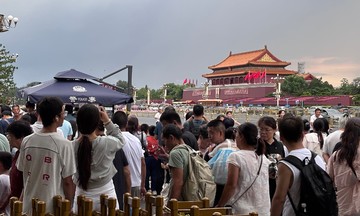Tensions between Cambodia and Thailand escalated on the morning of 24/7, when the two countries' militaries exchanged fire near Ta Moan Thom Temple, later spreading to other areas along the border.
The fighting intensified as Cambodian and Thai forces deployed heavy weapons. Thailand accused Cambodia of firing BM-21 rockets into residential areas and responded by deploying F-16 fighter jets to strike military targets across the border.
Thai officials reported at least 15 people killed and more than 30 injured in the clashes. Cambodia has not released casualty figures.
 |
Cambodian soldiers on a truck carrying a BM-21 multiple rocket launcher travel on a road in Oddar Meanchey province on 25/7. Photo: AFP |
Cambodian soldiers on a truck carrying a BM-21 multiple rocket launcher travel on a road in Oddar Meanchey province on 25/7. Photo: AFP
This is the most serious clash between the two neighbors in over a decade. However, border tensions between Cambodia and Thailand have simmered since at least 1907, centered on the thousand-year-old Preah Vihear Temple.
In the early 20th century, Cambodia was a French colony, and the Thailand-Cambodia border was mapped by the French at the request of a bilateral commission. Under a 1904 agreement, the border would follow the natural watershed between the two countries, primarily along the Dangrek Mountains, which run east-west in northern Cambodia, bordering Thailand.
This is considered the main watershed between the two nations, as rainwater falling north of the Dangrek Mountains flows towards tributaries of the Mekong River in northeastern Thailand, while water on the southern slopes flows into Cambodian river systems. The ancient Preah Vihear Temple sits atop the Dangrek Mountains.
However, the French-drawn map incorrectly placed Preah Vihear Temple within Cambodia, even though it lies north of the watershed. Thailand accepted this map for official use but discovered the error during a separate survey in 1930 and began to complain.
Despite this, the International Court of Justice (ICJ) ruled that their objection was too late and they had forfeited control of the temple by "implicitly accepting" the map.
The Thai government then attempted to negotiate a border adjustment with the French colonial authorities of Indochina. However, this process ended when France surrendered to Nazi Germany in 1940.
With Cambodia gaining independence and the French withdrawal in 1953, Thai troops occupied Preah Vihear Temple in 1954, claiming the border based on the natural watershed. Cambodia protested, and the temple became a focal point of the dispute.
 |
Location of the Dangrek Mountains and the disputed temples between Cambodia and Thailand. Graphic: CNA |
Location of the Dangrek Mountains and the disputed temples between Cambodia and Thailand. Graphic: CNA
Thailand argued that the temple was built facing north to serve the plains above, not the distant Cambodian plains below. However, based on the 1907 French map, Cambodia asserted the temple was within its territory. Ultimately, both countries agreed to submit the dispute to the ICJ and abide by its ruling.
In 1962, the ICJ judges awarded ownership of Preah Vihear Temple to Cambodia by a 9-3 vote, declaring the 1907 map clearly showed Preah Vihear within Cambodian territory.
However, the ICJ only ruled on the temple itself, not the adjacent land to the north, where the temple's entrance is located. Thailand reluctantly returned the temple but continued to claim the surrounding area, emphasizing that the border in these areas had never been formally demarcated.
The ruling became a major point of tension in Cambodia-Thailand relations.
In 2008, Cambodia applied to the United Nations Educational, Scientific and Cultural Organization (UNESCO) to have Preah Vihear recognized as a World Heritage Site.
Thailand opposed this move, arguing that Cambodia's application included the land surrounding the temple, which Thailand still considered its territory. To avoid escalating tensions, Cambodia withdrew its initial application. They later resubmitted a revised map, requesting recognition only for the temple itself.
Preah Vihear's UNESCO recognition, even just for the temple, sparked renewed tensions. Thailand claimed Cambodia used this recognition to assert sovereignty over the disputed area, leading to military clashes.
From 2008 to 2011, fighting erupted repeatedly along the border near Preah Vihear Temple and other disputed areas like Ta Moan Thom and Ta Krabey temples. Hundreds of soldiers and civilians were killed and injured. Both sides accused each other of violating sovereignty and firing first.
In April 2011, Cambodia filed a request with the ICJ to interpret the 1962 ruling and asked the court to implement provisional measures to end the conflict.
 |
Thai and Cambodian soldiers stand guard at an ancient Khmer temple along the disputed border between the two countries in Oddar Meanchey province in March. Photo: AFP |
Thai and Cambodian soldiers stand guard at an ancient Khmer temple along the disputed border between the two countries in Oddar Meanchey province in March. Photo: AFP
In July 2011, the ICJ rejected Thailand's request to dismiss Cambodia's case, requiring both countries to withdraw their troops from a "provisional demilitarized zone," which included the disputed area and part of its vicinity, to continue to cooperate with ASEAN and ASEAN-appointed observers, and to refrain from any action that might "aggravate or extend the dispute." The court also ordered Thailand not to obstruct Cambodian access to Preah Vihear Temple.
In November 2013, the ICJ declared that the 1962 ruling had awarded the entire disputed area to Cambodia and ordered Thai troops to withdraw. This ruling followed a period of escalating tensions.
However, the court rejected Cambodia's argument that the nearby Phnom Trap hill should also be awarded to it under the 1962 ruling. Phnom Trap, which Thais call Phu Ma-khuea, is a hill 3 km northwest of the temple and accounts for over 4 km2 of the 4.6 km2 disputed by both nations.
The ICJ concluded that the reference to the "vicinity" of Preah Vihear Temple in the operative part of the 1962 judgment was not intended to extend to Phnom Trap.
This ruling once again caused resentment and protests in Thailand, but the military situation on the border generally calmed down afterward.
Tensions flared again in May, after Thai and Cambodian armed forces exchanged fire in a relatively small disputed border area, killing a Cambodian soldier.
Although both countries subsequently declared their agreement to de-escalate the situation, Cambodian and Thai authorities continued to increase their military presence in the disputed areas, keeping tensions high.
Thailand imposed strict restrictions on its border with Cambodia, suspending most cross-border activities except for emergencies.
Residents of Surin province, Thailand, flee on the morning of 24/7 as fighting breaks out. Video: Youtube/ShanghaiEyeMagic
Cambodia also banned Thai films and television programs, halted fuel, fruit, and vegetable imports from its neighbor, and boycotted some Thai internet lines and electricity supplies.
On 24/7, following the outbreak of clashes, Thai authorities announced the complete closure of the border with Cambodia. Forces from both countries continued to clash along the border today, using heavy weapons like artillery and rockets.
Thailand's Nation newspaper reported that the Thai military had captured Preah Vihear and Ta Krabey temples, but Cambodian Defense Ministry deputy spokesman Mao Sophy Chetra denied this, asserting that both temples remained under Cambodian control.
Vu Hoang (According to AP, AFP, Reuters)












